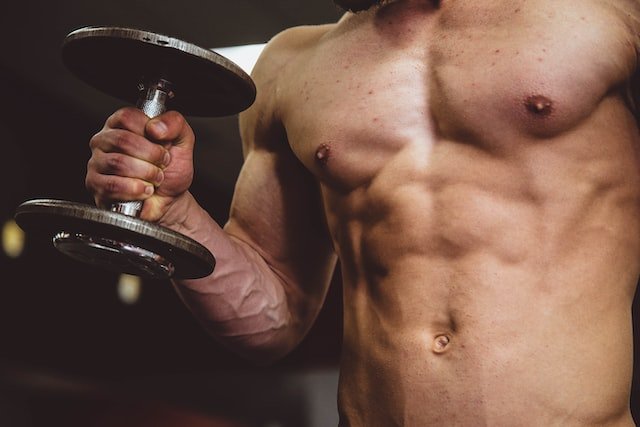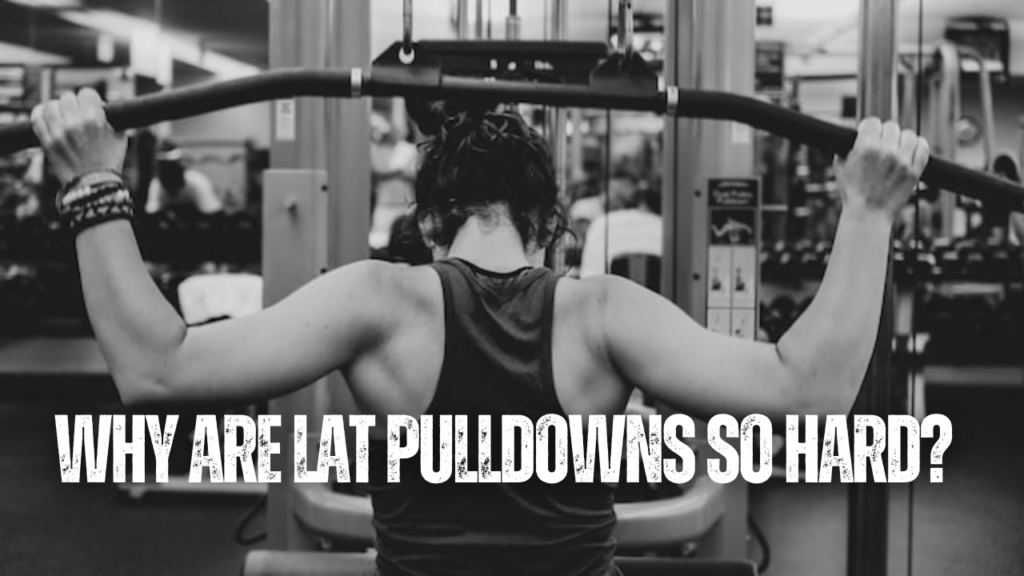
Forearm Sore After Hammer Curls? 13 Tips To Fix Issue
Have you ever felt a strange pain in your forearm after hammering out some curls? Maybe it feels like there’s something inside the muscle, twitching and radiating that sore ache.
You’re not the only one – this is an awkwardly common experience among people trying to improve their bicep strength, especially with this exercise. But don’t worry, i’m here to help and get you back on track.
In this blog post, I’ll be exploring why it may happen and how you can prevent or relieve forearm soreness after hammer curls.
Why Is My Forearm sore after hammer curls?
First off, let’s look at why you might experience soreness after hammer curls. When performing the exercise, you may be gripping the weight too tightly with an overly active grip or using a weight that is too heavy for your current strength level. This can cause tight muscles and make it difficult to perform the exercise. Additionally, not warming up before your workout can contribute to soreness. Tendonitis is another potential cause of forearm soreness after hammer curls. This occurs when the tendons in your wrist become inflamed, which can be caused by overuse or repetitive strain/fatigue. Forearm splints and weak forearms are also possible causes, as well as trapped nerves in some extreme cases. It’s important to ensure that your form is correct when performing the exercise and to ensure that you warm up beforehand, as this will help loosen your muscles and reduce the chances of developing any issues.
Getting sore forearms after hammer curls can be a frustrating experience, but it doesn’t have to be the end of the world. There are a few simple things that you can do to help prevent and/or relieve discomfort after hammer curls…
1. Difference between hammer curls and bicep curl
It’s also worth mentioning the difference between hammer curls and regular bicep curls. Hammer curls are performed with your palms facing inward with a neutral grip, rather than a supinated/underhand grip (palms facing upwards) like in a normal curl. This means that you’ll be able to use more weight, as most of the mechanical advantage is gained from an increased grip strength.
Also, because of their neutral grip, hammer curls target the long, outer head of the bicep and the brachialis muscle more than regular or regular reverse curls. This grip encourages full range of motion throughout the movement, which helps to provide shape and definition to your biceps. However, this can lead to different levels of forearm soreness after hammer curls due to the additional tension placed on them.
As the hammer curl involves holding the weight with a neutral grip, it helps to reduce strain on the wrists and elbows. Additionally, this type of curl requires increasing stabilisation from other muscles in the body, such as your back and core muscles. As a result, it works those muscles more than the regular bicep curl.
2. Don’t grip so tight
To help reduce forearm soreness after hammer curls, try not to grip the weight too tight. Squeezing the weight tightly can create unnecessary tension throughout your arms, shoulders and back. To ensure that you don’t overgrip, take a few seconds before starting your set to relax your hands and shake them out a bit.
It can be quite natural to grip the dumbbell handle harder when doing this exercise due to the change in grip and extra strain placed on your forearms. However, this can cause problems and contribute to soreness after hammer curls, so try to be mindful of how much you are gripping it.
The fact the dumbbell is held upright also encourages an increased grip on the weight, so it doesn’t slide and move in your palm while holding it. To help reduce any tension, try to not grip so tight and let the dumbbell handle sit in your palm rather than actively squeezing it.
3. Reduce the weight
Another cause of forearm soreness after hammer curls is using weights that are too heavy for your current level of strength. If you feel pain or strain on your forearms when performing the exercise, then reduce the weight and focus on completing slower, more controlled reps with perfect form.
Using a lighter weight will help to decrease any stress or pressure on your wrists and forearms, and reduce the chances of developing any issues. If the weight is too heavy for you, it will also make you grip the handle harder to make sure you can perform each rep correctly, which as we mentioned before, can lead to forearm soreness after hammer curls.
Overall, if you experience any pain or discomfort in your wrists and forearms when doing the exercise, then it’s important to take a step back and reduce the weight or stop the exercise altogether. Forearm pain should not be ignored and can be a sign of an underlying issue, so it’s important to listen to your body and take precautions.

4. Tight muscles
If you have tight forearms in general or from a previous workout, then it could be contributing to your discomfort after hammer curls. I always find that my forearms are affected the most after a heavy back or kettlebell workout, my forearms are rock solid and they need a good couple of days to rest and recover before embarking on another workout.
To help reduce the pain, consider stretching your forearms and wrists before doing hammer curls or any other type of bicep exercise. Forearm stretches can include rolling a tennis ball in your hand or simply holding a gentle stretch for 10-20 seconds on each side. This helps to increase circulation in the area and reduce soreness after hammer curls.
Using a foam roller is also a great way to loosen up tight muscles and reduce any aches or pains in your forearms. Be sure to roll out the entire forearm, from your wrist right up to your elbow, which will help to relieve any tension you might be experiencing.
5. Wrist movement
Not maintaining a neutral wrist when doing hammer curls over time will cause pain and discomfort in your wrists and forearms.
If you allow your wrist to flop or relax while holding the dumbbell, it will put your wrist into adduction, which can create inflammation and other problems over time. To prevent this, keep your wrist in a neutral position when doing hammer curls.
Additionally, make sure that you don’t twist your wrists to the side as you curl up or you will be placing unnecessary strain on them. You don’t want any kind of wrist movement (extension, flexion or abduction) when doing this exercise as it will create problems in the long run.
Related: Elbow Pain During Triceps Workout?
6. How is your form?
Another cause of forearm soreness after hammer curls can be attributed to your form. Make sure you’re doing each rep with proper technique and control as this will reduce any strain on your wrists and forearms. Make sure your upper arms are pulled in tight to your side and that your elbows are tucked in close. This will keep the weight balanced and prevent any extra stress on your wrists or forearms while doing hammer curls.
Additionally, make sure you’re curling up with a full range of motion, but not over-extending your arms at the top. There should only be movement from your elbow joint and not your wrist joint when performing the exercise. If you are straining or feeling discomfort, then reduce the weight and focus on maintaining perfect form throughout each repetition.
If you’re not using the correct form, then your grip will become too tight as you compensate for incorrect movement, leading to pain and discomfort. So be sure to check your form regularly and take the time to perfect it before attempting any heavy weights.
7. Lack control
If you are doing hammer curls too fast and rushing them, then you could be creating unnecessary tension and strain on your wrists and forearms. When performing any type of bicep exercise, always take the time to slowly curl up the weight and lower it down with control. This will reduce any tightness that might occur after hammer curls due to a lack of focus in the movement.
If you are effectively throwing the dumbbells around you will also cause a jerking motion, which can transfer to the wrists and forearms, especially if you are using a heavier weight. So focus on keeping your movements smooth and controlled throughout each repetition. Doing quick-fire hammer curls also shows a lack of focus on the exercise, which can result in pain and soreness afterwards, so take your time and do it right.
8. Weak forearms
Forearm strength is essential for any bicep exercise as they support the grip and helps to control the weight as you curl up. If your forearms are too weak, then this can result in an overall lack of control when doing hammer curls, leading to pain and soreness afterwards.
To prevent this, focus on strengthening your forearms with exercises such as wrist curls and reverse wrist curls which will help to increase your grip strength and provide a better base of support for your bicep exercises. Farmers’ walks and kettlebell swings can also help to increase your forearm strength and stability.
The same applies if you have a weak grip, as it can lead to unnecessary tension in your forearms when performing hammer curls. Make sure you regularly train your grip strength with exercises such as barbell holds, plate pinches and other grip variations.

9. Repetitive strain and fatigue
If you are doing the same type of exercises every workout then your muscles and tendons can become overworked, leading to pain and soreness in the forearms. To prevent this, mix up your bicep exercises regularly so that your body is constantly challenged and stimulated.
If you are doing a high number of hammer curls, your forearms and wrists can start to become overworked and fatigued. Try reducing the number of sets you are doing or increasing the rest periods between each set to prevent this.
If you have a job that requires a lot of manual handling or repetitive motions, then this could also be a contributing factor to your forearm pain. Consider taking regular breaks from using your arms and wrists during the day and focusing on strengthening exercises for your forearms such as those mentioned above.
10. Tendonitis
If you are experiencing forearm soreness after hammer curls and it lasts for a few days or weeks, then you could be developing tendonitis in your wrist. This is an overuse injury caused by repetitive strain on the tendons and muscles around your wrists. It typically presents as pain and tenderness in the forearms and is usually worse when lifting or gripping heavy objects.
If you think you may have tendonitis, then it’s important to take some time off from exercising and rest your wrists. Consider seeking medical advice if the pain persists for more than a few days to help you manage the condition.
Recovering from tendonitis can take you out of training for months and even years if it’s not dealt with correctly, so it’s important to take the necessary steps to prevent further injury and time out from the gym.
Related: Can I train biceps before back workout?
11. Tennis elbow and golfers’ elbow
Tennis elbow and golfers’ elbow can also be caused by doing hammer curls. Tennis elbow occurs when the tendons around the outside of your elbow become inflamed and painful, while golfers’ elbow is similar but affects the inside of your arm. The pain you experience from these two conditions will feel different to normal soreness after exercise. It will feel more like a burning ache or a sharp shooting pain and will be localized to a specific area of your arm.
If you do start to experience pain in the elbow area, then it’s best to stop the exercise immediately and seek medical advice if necessary. Resting the arms, doing stretching exercises and using ice packs are all good ways of managing the pain from these injuries.
Although these are both seen as elbow injuries, they still affect the forearms and can contribute to forearm soreness. So it’s important to take measures to prevent them from occurring in the first place.
12. Forearm splints
Forearm splints are similar to shin splints and can be caused by hammer curls if your form is incorrect. Forearm splints usually present as a sharp pain on the inside of the forearm and can affect both arms at the same time.
Forearm splints are caused by the muscles in the forearm being overworked, or the tendons and ligaments being strained. To prevent this from happening, you need to make sure you are taking the correct precautions such as using a weight that is appropriate for your current strength level and ensuring your grip on the weights is not too tight.
It’s also important to warm up before exercising and cool down afterwards, as well as stretch out your arms regularly throughout the day. If you do start to experience pain in the forearm area, then it’s best to stop the exercise immediately and rest your arms.
13. Trapped nerve
If you experience a sharp pain in your forearm that is worse when gripping or lifting weights, then it could be a trapped nerve. This occurs when the nerves in your arm become compressed, which can cause pain and tingling sensations. Forearm muscles are particularly prone to this injury as they are always being used for activities like typing, writing and gripping weights.
If you think you may have a trapped nerve, then the best thing to do is rest your arm for at least 48 hours and avoid gripping or lifting any heavy objects (easier said than done). Seek medical advice if the pain persists for longer than this.
This is a more severe injury and can take weeks or months to recover from, so it’s important to take the necessary steps to prevent it from occurring in the first place. It will also be very painful so it’s important to get it treated as soon as possible.
Final thoughts…
Forearm soreness after hammer curls is a common issue and can be caused by any number of things such as gripping heavy weights, not warming up before your workout or suffering from tendonitis to name a few. It’s important to take the necessary precautions to prevent these injuries from occurring in the first place, such as using a weight that is appropriate for your current strength level and warming up before exercise.
If you do start to experience pain in the forearm area, then it’s best to stop the exercise immediately and seek medical advice if necessary. Once treated, make sure you take precautions such as using lighter weights and stretching regularly to avoid further injuries.
Are your forearms sore after hammer curls and have these tips helped? Let me know in the comments below!


